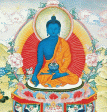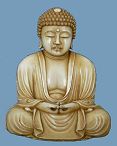 The Villa Del Prado Light of Asia Collection is a broad cohesive representation of artistic renderings of Buddha Shakyamuni as interpreted in various cultural and historical contexts around the world where Buddhism has flourished. This exceptional collection contains more than 100 sculptures, fashioned from various materials, such as jade, bronze, ivory, wood, stone, porcelain and ceramic... some contemporary, others centuries old. The ivory collection is particularly noteworthy with its fine collection of ivory okimono. The collection also includes an equal number of miniatures, medallions and amulets, plus a few Tibetan Thangka paintings, all collected from countless sources around the world over a period spanning several decades.
The Villa Del Prado Light of Asia Collection is a broad cohesive representation of artistic renderings of Buddha Shakyamuni as interpreted in various cultural and historical contexts around the world where Buddhism has flourished. This exceptional collection contains more than 100 sculptures, fashioned from various materials, such as jade, bronze, ivory, wood, stone, porcelain and ceramic... some contemporary, others centuries old. The ivory collection is particularly noteworthy with its fine collection of ivory okimono. The collection also includes an equal number of miniatures, medallions and amulets, plus a few Tibetan Thangka paintings, all collected from countless sources around the world over a period spanning several decades.
Looking at the beautiful and varied works of art ain this collection, one can sense the intense faith that Buddhism inspires in its followers. The creators of the majority of these magnificent statues remain unknown, and this anonymity underscores the fact that these objects were not intended to produce a detached aesthetic experience or merely to reflect credit upon their artists. Instead Buddhist artworks serve primarily to instruct, awe and inspire the devotee.
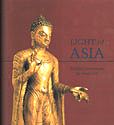 There were only two previous major exhibitions in the past century which were devoted to an examination of the Buddha... one organized by the late Professor Benjamin Rowland of Harvard University in 1964. And then two decades later, the magnificent Light of Asia exhibition was held at the Los Angeles County Museum of Art from March 4 - May 20, 1984, attended by the curator of this collection. The Light of Asia held subsequent exhibitions of the same collection at the Art Institute of Chicago and the Brooklyn Museum later that same year.
There were only two previous major exhibitions in the past century which were devoted to an examination of the Buddha... one organized by the late Professor Benjamin Rowland of Harvard University in 1964. And then two decades later, the magnificent Light of Asia exhibition was held at the Los Angeles County Museum of Art from March 4 - May 20, 1984, attended by the curator of this collection. The Light of Asia held subsequent exhibitions of the same collection at the Art Institute of Chicago and the Brooklyn Museum later that same year.
Buddhism has long held a fascination for artists and authors around the world, in particular the epic poem by Sir Edwin Arnold, The Light of Asia, from which the 1984 exhibition took its name. This name was also borrowed for this collection which was inspired by the prominent 1984 exhibition.
Today the Buddhist religion - especially the Zen Buddhism of Japan and various forms of Tibetan Buddhism - continues to steadily attract a following both in Europe and in America. Nevertheless, the Western public often feels alienated when confronted with typical exhibitions of Asian art and immediately imagines multi-limbed deities and arcane philosophies.
 The cultural diversity and religious complexity inherent in the art of Asia, particularly the multi-limbed deities and intimidating icons of Buddhism, can indeed appear quite formidable to the uninitiated. An examination of representations of Buddha Shakyamuni - the historical personage who was later deified in much the same manner as Jesus Christ - however, provides an easily accessible introduction to Asian art, and the thematic unity of this collection should help even the most uninformed viewer to recognize and appreciate the cultural diversity of Asia without being overwhelmed or alienated by it.
The cultural diversity and religious complexity inherent in the art of Asia, particularly the multi-limbed deities and intimidating icons of Buddhism, can indeed appear quite formidable to the uninitiated. An examination of representations of Buddha Shakyamuni - the historical personage who was later deified in much the same manner as Jesus Christ - however, provides an easily accessible introduction to Asian art, and the thematic unity of this collection should help even the most uninformed viewer to recognize and appreciate the cultural diversity of Asia without being overwhelmed or alienated by it.
 Known as Shakyamuni or Sakyamuni (Sage of the Shakya People), the Buddha lived in the 6th and 5th centuries, B.C. thus preceding Jesus Christ by some five centuries and antedating Mohammed, the founder of Islam, by over one thousand years. He would probably not have considered himself the founder of a new faith or religion, but the fact remains that his teachings, which were systematized by his followers after his death, have profoundly influenced the lives and cultures of countless inhabitants of the vast Asian continent for over two thousand years. More than a religion in the western sense, Buddhism in Asia is a great social and cultural tradition. Buddhism originated in India and then spread across Asia through Tibet, Nepal, China, Japan, Mongolia, Korea, Laos, Vietnam, Cambodia, Thailand, and Indonesia. In China, Japan and Cambodia, the cult of Buddha Shakyamuni was probably eclipsed, although not totally displaced, by that of Amida Buddha, the transcendental and cosmic Buddha.
Known as Shakyamuni or Sakyamuni (Sage of the Shakya People), the Buddha lived in the 6th and 5th centuries, B.C. thus preceding Jesus Christ by some five centuries and antedating Mohammed, the founder of Islam, by over one thousand years. He would probably not have considered himself the founder of a new faith or religion, but the fact remains that his teachings, which were systematized by his followers after his death, have profoundly influenced the lives and cultures of countless inhabitants of the vast Asian continent for over two thousand years. More than a religion in the western sense, Buddhism in Asia is a great social and cultural tradition. Buddhism originated in India and then spread across Asia through Tibet, Nepal, China, Japan, Mongolia, Korea, Laos, Vietnam, Cambodia, Thailand, and Indonesia. In China, Japan and Cambodia, the cult of Buddha Shakyamuni was probably eclipsed, although not totally displaced, by that of Amida Buddha, the transcendental and cosmic Buddha.
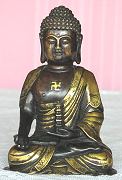 This collection focuses on the historical Buddha Shakyamuni and the Amida Buddha of Japan and China with characteristic artistic representations of Buddha Shakyamuni in many different mediums including Bronze, Silver, Ivory, Jade, Wood, Stone, Porcelain, and Ceramic. A keen observer will note the common use of the swastika on the chest. In China, about 2000 years ago, when Buddhism was brought to China from India, the Chinese also borrowed the swastika. It is called the WAN symbol. From the word 'S-vasti' in Sanskrit, the swastika represents the Heart of the Buddha Shakyamuni, resignation of spirit, all happiness that humanity desires, as well as mind, infinity, all. For a history of this ancient symbol click here.
This collection focuses on the historical Buddha Shakyamuni and the Amida Buddha of Japan and China with characteristic artistic representations of Buddha Shakyamuni in many different mediums including Bronze, Silver, Ivory, Jade, Wood, Stone, Porcelain, and Ceramic. A keen observer will note the common use of the swastika on the chest. In China, about 2000 years ago, when Buddhism was brought to China from India, the Chinese also borrowed the swastika. It is called the WAN symbol. From the word 'S-vasti' in Sanskrit, the swastika represents the Heart of the Buddha Shakyamuni, resignation of spirit, all happiness that humanity desires, as well as mind, infinity, all. For a history of this ancient symbol click here.
The Buddha is displayed in variations of different Mudras, a number of different ritualized and stylized poses which indicate various teachings including Knowledge, Fearlessness, Charity, Understanding and the Earth Witness gesture, (touching the earth in witness).
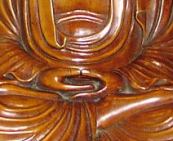 Perhaps the most important Mudra is the Meditation Mudra, also called the Samadhi or Dhyana Mudra, with hands placed on the lap, right hand over the left, fingers straight and the palms facing upwards, in some cases with thumbs touching at the tips, thus forming a mystic triangle. The Mida-no Jouin Mudra, also referred to as the Amida's Meditation Mudra, is used exclusively in Zen Buddhism in Japan, where like the ivory Buddha at the top of this page, the thumbs and index finger of both hands touch each other, forming a circle.
Perhaps the most important Mudra is the Meditation Mudra, also called the Samadhi or Dhyana Mudra, with hands placed on the lap, right hand over the left, fingers straight and the palms facing upwards, in some cases with thumbs touching at the tips, thus forming a mystic triangle. The Mida-no Jouin Mudra, also referred to as the Amida's Meditation Mudra, is used exclusively in Zen Buddhism in Japan, where like the ivory Buddha at the top of this page, the thumbs and index finger of both hands touch each other, forming a circle.
It was seated in the Samadhi position that Buddha Shakyamuni achieved Enlightenment while sitting beneath the Bodhi tree. From this experience his teachings evolved, teachings so simple and universal that they should offend no one:

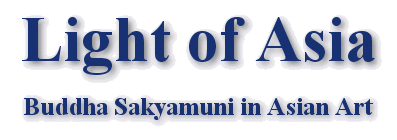
 The
The  There were only two previous major exhibitions in the past century which were devoted to an examination of the Buddha... one organized by the late Professor Benjamin Rowland of Harvard University in 1964. And then two decades later, the magnificent
There were only two previous major exhibitions in the past century which were devoted to an examination of the Buddha... one organized by the late Professor Benjamin Rowland of Harvard University in 1964. And then two decades later, the magnificent 
 Known as
Known as  This collection focuses on the historical Buddha Shakyamuni and the Amida Buddha of Japan and China with characteristic artistic representations of Buddha Shakyamuni in many different mediums including Bronze, Silver, Ivory, Jade, Wood, Stone, Porcelain, and Ceramic. A keen observer will note the common use of the swastika on the chest. In China, about 2000 years ago, when Buddhism was brought to China from India, the Chinese also borrowed the swastika. It is called the WAN symbol. From the word 'S-vasti' in Sanskrit, the swastika represents the Heart of the Buddha Shakyamuni, resignation of spirit, all happiness that humanity desires, as well as mind, infinity, all. For a history of this ancient symbol
This collection focuses on the historical Buddha Shakyamuni and the Amida Buddha of Japan and China with characteristic artistic representations of Buddha Shakyamuni in many different mediums including Bronze, Silver, Ivory, Jade, Wood, Stone, Porcelain, and Ceramic. A keen observer will note the common use of the swastika on the chest. In China, about 2000 years ago, when Buddhism was brought to China from India, the Chinese also borrowed the swastika. It is called the WAN symbol. From the word 'S-vasti' in Sanskrit, the swastika represents the Heart of the Buddha Shakyamuni, resignation of spirit, all happiness that humanity desires, as well as mind, infinity, all. For a history of this ancient symbol  Perhaps the most important Mudra is the Meditation Mudra, also called the Samadhi or Dhyana Mudra, with hands placed on the lap, right hand over the left, fingers straight and the palms facing upwards, in some cases with thumbs touching at the tips, thus forming a mystic triangle. The Mida-no Jouin Mudra, also referred to as the Amida's Meditation Mudra, is used exclusively in Zen Buddhism in Japan, where like the ivory Buddha at the top of this page, the thumbs and index finger of both hands touch each other, forming a circle.
Perhaps the most important Mudra is the Meditation Mudra, also called the Samadhi or Dhyana Mudra, with hands placed on the lap, right hand over the left, fingers straight and the palms facing upwards, in some cases with thumbs touching at the tips, thus forming a mystic triangle. The Mida-no Jouin Mudra, also referred to as the Amida's Meditation Mudra, is used exclusively in Zen Buddhism in Japan, where like the ivory Buddha at the top of this page, the thumbs and index finger of both hands touch each other, forming a circle.
